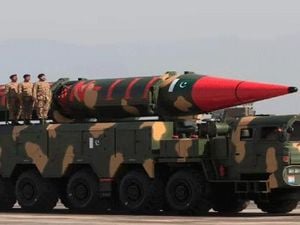On October 5, 2025, the world’s energy markets received news that eight leading members of OPEC+, including Algeria, Iraq, Kazakhstan, Kuwait, Oman, Russia, Saudi Arabia, and the United Arab Emirates, had agreed to a modest increase in oil production. The alliance, which also encompasses other producers, settled on raising output by 137,000 barrels per day (bpd) for November—matching the increase adopted in October. This decision, while seemingly minor, reflects a delicate balancing act in a market fraught with competing pressures and global uncertainties.
According to Oilprice.com, the increment was viewed as a cautious move amid persistent fears of oversupply. Traders and analysts had speculated about a much larger hike—rumors swirled of a potential 500,000 bpd jump—but OPEC+ ultimately favored a more measured approach. This restraint, the group said, was rooted in “a steady global economic outlook and current healthy market fundamentals,” with particular emphasis on low oil inventories worldwide.
Market reaction was almost immediate. Brent crude prices edged above $65 per barrel, rebounding from an 8% slump the previous week, while WTI climbed to $61.78. The price uptick—just over 1% on the day—signaled that traders’ worst fears of a flood of new supply had been allayed, at least for now. As Bloomberg reported, the news “staved off traders’ fears of a super-sized increase.”
Yet, beneath the surface of this seemingly straightforward agreement, tensions simmered. Leading up to the meeting, reports from Oilprice.com and other outlets highlighted a rift between Russia and Saudi Arabia. Russia, facing the twin challenges of Western sanctions and a desire to avoid downward pressure on prices, advocated for a modest output rise. Saudi Arabia, on the other hand, lobbied for a much more aggressive hike—double, triple, or even quadruple the final figure. The Kingdom’s ambitions were likely fueled by a desire to reclaim market share from non-OPEC producers, especially as countries like the United States, Brazil, and Guyana ramped up their own output.
The United States, in particular, has been making waves in the global oil arena. As of July 2025, America’s oil industry hit a record 13.64 million barrels per day, according to the U.S. Energy Information Administration. This figure, up 109,000 bpd from June, cemented the U.S.’s position as the world’s top oil producer in 2025—a fact not lost on OPEC+ strategists. Despite warnings from U.S. shale executives about the possible end of the domestic shale boom, the country’s output continues to climb, putting further pressure on the cartel to defend its turf.
But the OPEC+ decision was not just about market share or prices. There’s a deeper structural issue at play: spare production capacity. According to Reuters, the alliance’s incremental increases since April 2025—now totaling over 2.7 million bpd, or about 2.5% of global demand—have steadily eroded the group’s buffer. This spare capacity, once a vital “shock absorber” against supply disruptions or geopolitical crises, is thinning rapidly. As of August 2025, OPEC+’s estimated spare capacity stood at 4.1 million bpd, with Saudi Arabia holding nearly 60% and the UAE about 20%.
Yet, the ability to tap this theoretical excess is increasingly in doubt. Some members, such as Kazakhstan, Algeria, and Oman, are already producing at or near full capacity. Kazakhstan, for instance, will see its output quota rise by just 7,000 bpd in November, reaching 1.563 million bpd—hardly a game-changer. Russia, meanwhile, faces not only sanctions but also infrastructure attacks, limiting its ability to raise output further. According to Reuters, “Russia has struggled to raise output, and Ukrainian drone attacks on its infrastructure in recent months risk further reducing its output.”
Saudi Arabia’s true spare capacity is another open question. Officially, the Kingdom is set to increase production to 10.06 million bpd in November. Historically, however, Saudi output has only briefly exceeded 12 million bpd (and only once, in April 2020, during the early COVID-19 lockdowns). Most analysts now estimate the Kingdom’s real spare capacity at between 600,000 and 1 million bpd, far lower than some earlier projections. The Saudi energy ministry’s decision in January 2024 to cap Aramco’s maximum sustainable capacity at 12 million bpd, abandoning previous plans for 13 million, only reinforces these doubts.
When these figures are combined with those from the UAE, Kuwait, and Iraq, OPEC+ is left with a collective buffer of around 2 million bpd—about 2% of global demand and at the low end of historical averages. This shrinking cushion has real-world implications. As Reuters energy columnist Ron Bousso noted, “the group’s spare production capacity, a vital market cushion, is rapidly diminishing.” Should another geopolitical crisis erupt—be it in Ukraine, the Middle East, or elsewhere—OPEC+ may find itself with limited ability to respond swiftly and stabilize prices.
There are also operational challenges. OPEC+ has consistently struggled to hit its own production targets. Between April and August, the alliance delivered only about 75% of planned increases, falling short by roughly 500,000 bpd. Part of this was due to countries like Iraq deliberately scaling back to compensate for past overproduction, but technical and investment constraints also played a role. Oil wells that have been shut for extended periods take time and money to revive—sometimes more than anticipated.
Despite these headwinds, the group remains intent on closely monitoring market dynamics. OPEC+ emphasized that “production adjustments may be paused or reversed if conditions change,” as stated in their official communique. The next meeting is scheduled for November 2, 2025, and will be watched closely for any signals of further adjustments or a shift in strategy. The stakes are high: with global demand signals and inventory trends in flux, any move could send ripples through the markets.
For now, the modest increase has bought OPEC+ time. But with spare capacity dwindling, non-OPEC rivals surging, and geopolitical risks ever-present, the alliance’s ability to steer the world’s oil markets is being tested as never before. The November gathering may well prove pivotal, as producers weigh the need for stability against the realities of a changing energy landscape.
As the dust settles on the latest OPEC+ decision, observers are left with a lingering question: Will the group’s cautious approach be enough to keep markets stable, or is a period of renewed volatility on the horizon?






